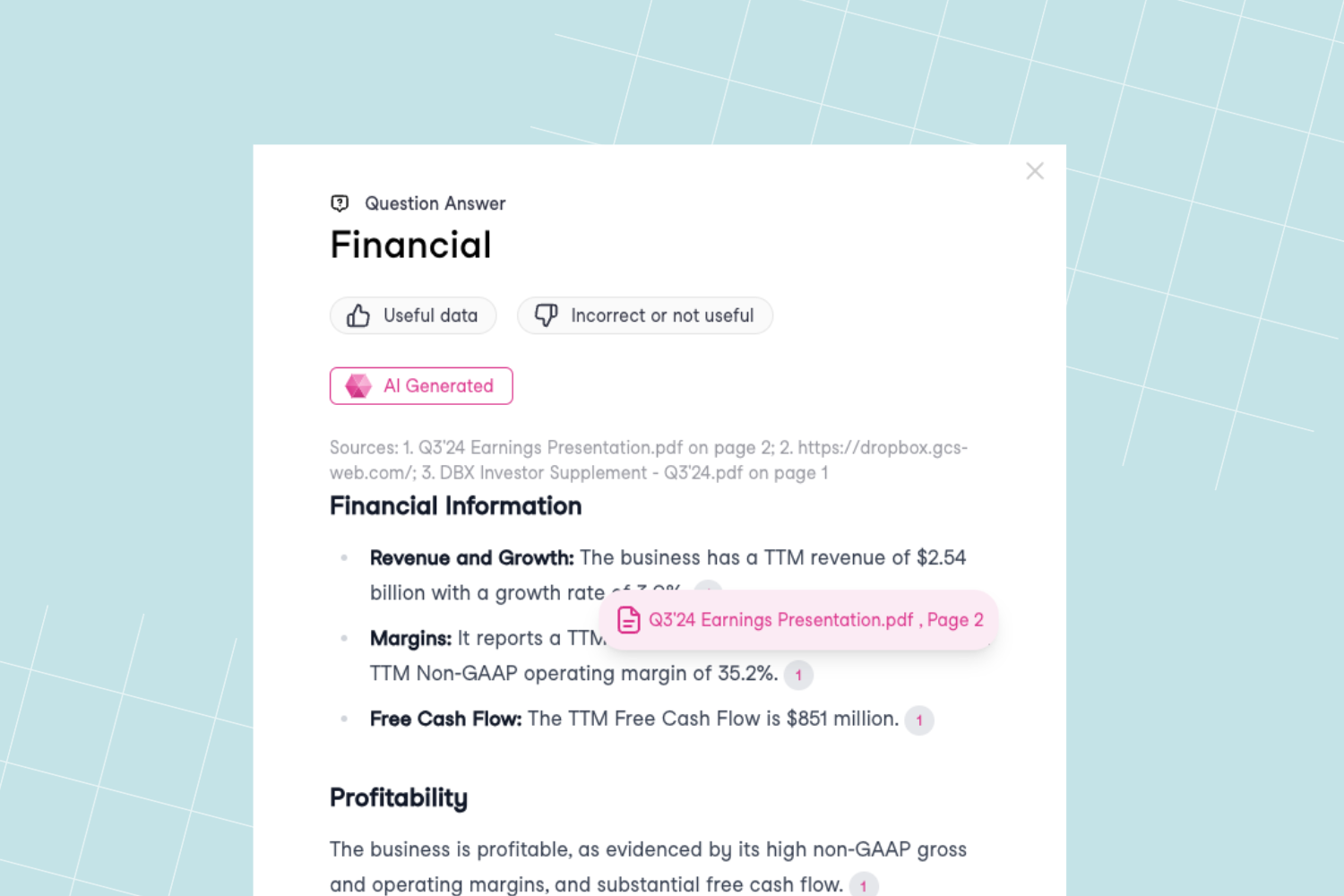Now Live: One-Click Source Verification for Every Fact
5 min read

Sixfold’s in-line citation feature is all about building trust and confidence with underwriters by making it effortless to trace the source of Sixfold’s insights. And now, with our latest update we’re making this feature even better on our commercial platform!
So, what is new?
When reviewing an applicant’s case, you'll notice these improvements:
- Exact Source Page: No more searching through the entire document—now you’ll see the exact page where a fact was found.
- In-line Fact Attribution: Each fact provided by Sixfold will include a specific source citation.
- One-Click Verification: Click any citation, and it will instantly open the source page for you.
It’s now even easier and more intuitive to check exactly where Sixfold’s insights came from—whether a questionnaire, loss run statement, webpage, or any other source. This improves traceability and gives underwriters extra peace of mind. No need to read through a full report or scroll through multiple pages to validate Sixfold’s insights.
“This feature exemplifies our commitment to building trustworthy and explainable AI with elegant simplicity.”
- Drew Das, AI Software Engineer
Get in touch to get a full demo of Sixfold's platform.
Use Case
Current Process
With Narratives
Quoting
Currently, risk factors are pulled together manually to decide if a case should be quoted.
Automatically summarizes key risk drivers upfront, providing a clear snapshot to prioritize cases faster.
Peer Reviews
Peer reviews are slowed by unstructured summaries; reviewers often have to go back to source documents.
Risk factors and case notes are presented clearly and consistently.
Referrals
Referral memos vary between underwriters; approvers often have to sort through inconsistent write-ups to understand the case.
Consistent case summaries make it easier for approvers to see the full risk story and sign off faster.
Decision Documentation
Underwriting rationale is often recorded unevenly; teams spend time cleaning up notes when preparing for audits.
A standardized record of underwriting rationale is created automatically, ready for audit without extra effort.
Business Impact
Faster decisions on which risks to quote.
More consistent risk appetite application and faster reviews.
Faster referral decisions.
Lower compliance risk and faster audit prep.
Quoting
use case
Current Process
Currently, risk factors are pulled together manually to decide if a case should be quoted.
With Narratives
Automatically summarizes key risk drivers upfront, providing a clear snapshot to prioritize cases faster.
Business Impact
Faster decisions on which risks to quote.
Peer Review
use case
Current Process
Peer reviews are slowed by unstructured summaries; reviewers often have to go back to source documents.
With Narratives
Risk factors and case notes are presented clearly and consistently.
Business Impact
More consistent risk appetite application and faster reviews.
Referrals
use case
Current Process
Referral memos vary between underwriters; approvers often have to sort through inconsistent write-ups to understand the case.
With Narratives
Consistent case summaries make it easier for approvers to see the full risk story and sign off faster.
Business Impact
Faster referral decisions.
Decisions Documentation & Audits
use case
Current Process
Underwriting rationale is often recorded unevenly; teams spend time cleaning up notes when preparing for audits.
With Narratives
A standardized record of underwriting rationale is created automatically, ready for audit without extra effort.
Business Impact
Lower compliance risk and faster audit prep.

